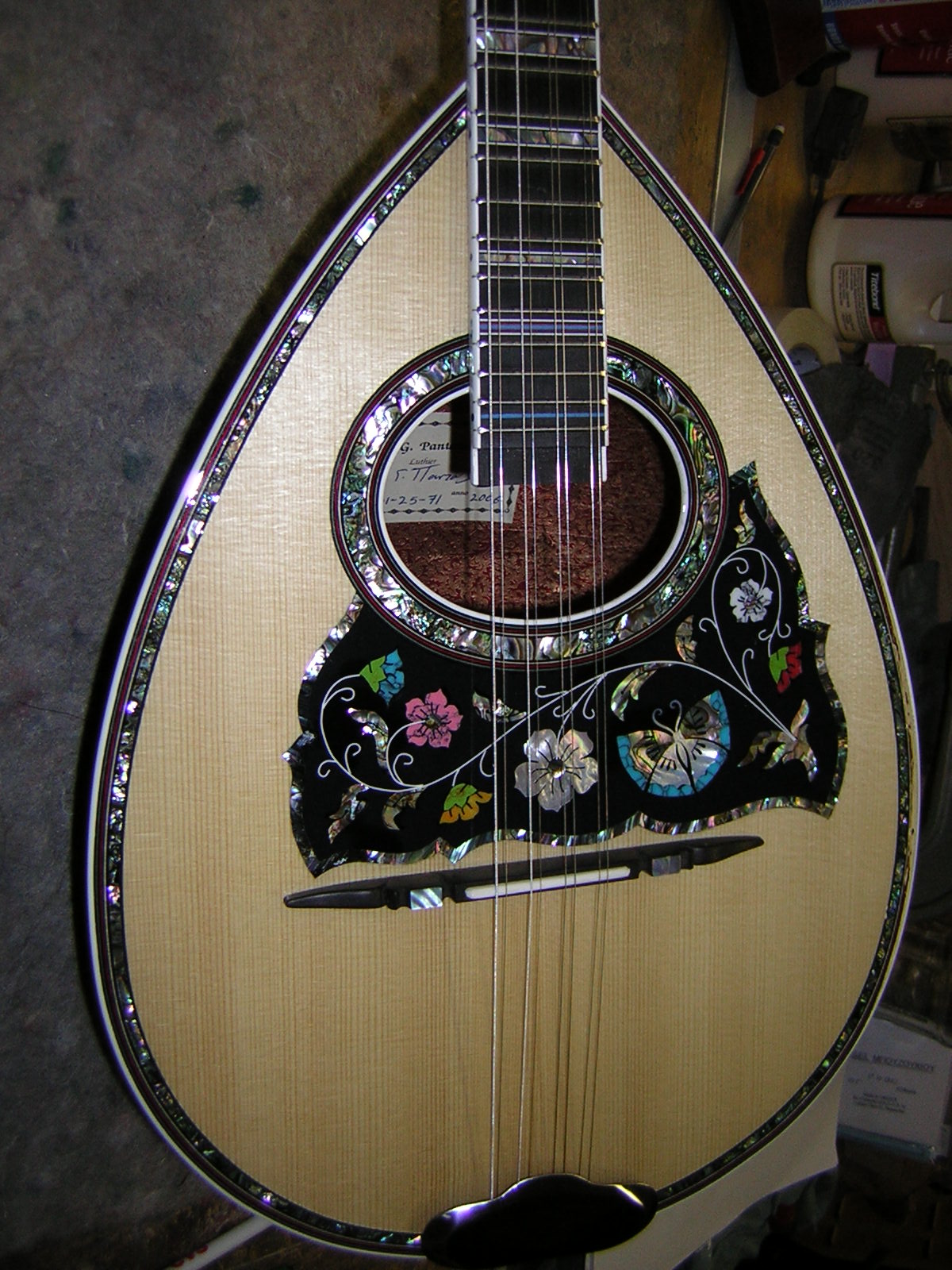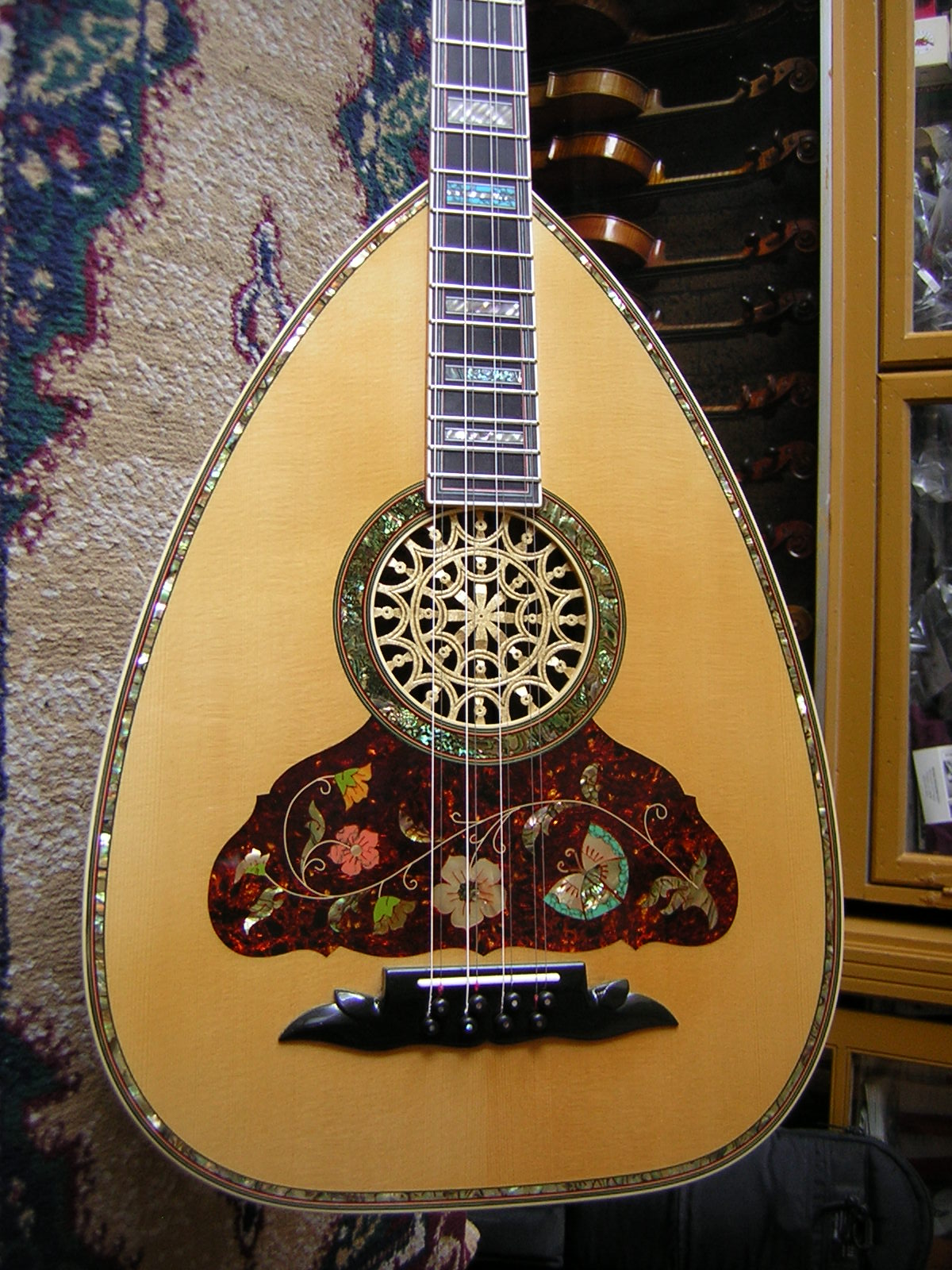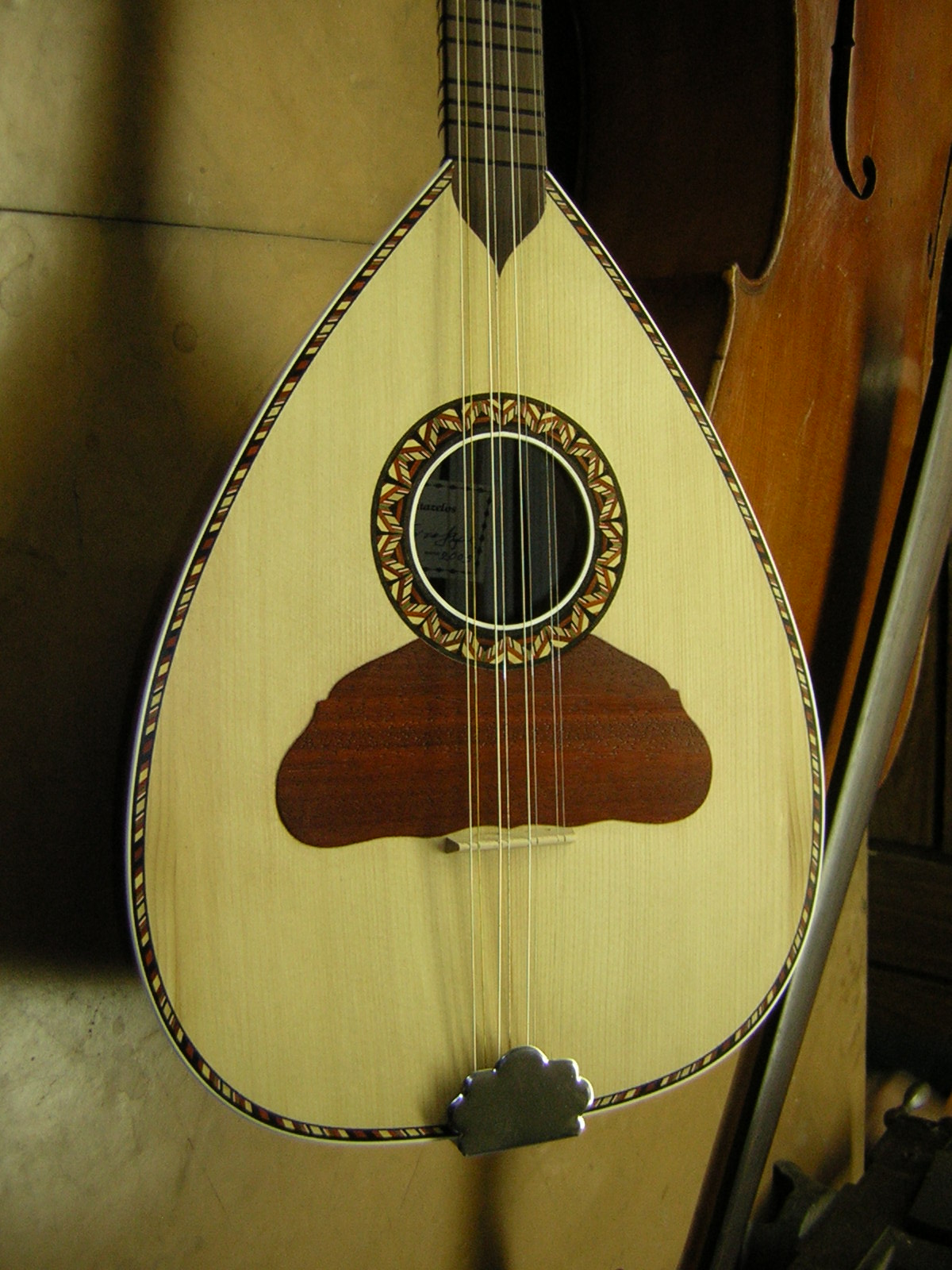Ethnic Instruments
The Greek Bouzouki
In Ancient Greece, this instrument was known as the "Tandouris" or "Pandourion", also called the "Trichord" because it had three strings; it was the first fretted instrument known, forerunner of the various families of lutes worldwide. The source of our knowledge about this instrument is the Mantineia marble (4th century BC, now exhibited at Athens Archaeological Museum), depicting the mythical contest between Apollo and Marsyas, where a Pandouris is being played by a muse seated on a rock.
From Byzantine times it was called the Tambouras. The modern Turkish Tanbur is practically identical to the ancient Greek Pandouris. On display in the National Historical Museum of Greece is the Tambouras of a hero of the Greek revolution of 1821, General Makriyiannis. This Tambouras bears the main morphological characteristics of the bouzouki used by the Rebetes.
The Turkish Saz and the Lebanese Buzuq belong to the same family of instruments as the bouzouki. A middle-sized kind of Saz is called a "Bozouk Saz". Bozouk in Turkish means "broken, not functioning, modified". Here it is used in order to specify the size of the instrument. It is concluded, therefore, that the bouzouki has been named after the jargon of the Turkish Saz.
Following the 1919-1922 war in Asia Minor and the subsequent exchange of populations between Greece and Turkey, the ethnic Greeks fled to Greece. The refugees brought with them the music known as Smyrneika, which made use of the Arabic lute (Oud or "Outi" as the Greeks called it). Soon the Outi was replaced by the bouzouki and the Smyrneika style fused into the Rembetika.
The early Bouzoukia were Trichordo, with three courses (six strings in three pairs) and were generally tuned to D3/D4 A3 D4. This tuning fits in well with the music of the Middle East, as an open chord is neither major nor minor, allowing great flexibility with the melody. Trichordo bouzoukis are still being made, and are very popular with aficionados of Rembetika.
After the Second World War, Tetrachordo (four-course) bouzoukis started to appear. It is not known who first added the fourth course. Possibly Stefanakis or Anastasios Stathopoulos. The Tetrachordo was made popular by Manolis Chiotis.
Trichordo
The Trichordo bouzouki was the usual type of bouzouki from around 1920. It had fixed frets, rather than movable ones, and it had 6 strings in three pairs, tuned D-a-d (or E-b-e). This type of bouzouki was used for Rebetiko. The illustrated bouzouki is a replica of a Trichordo bouzouki used by Markos Vamvakaris. It has tuners for eight strings, but has only six strings. The Luthiers of the time often used sets of four tuners on Trichordo instruments, as these were more easily available, since they were used on mandolins.
Tetrachordo
This type of bouzouki has 8 metal strings which are arranged in 4 pairs, known as courses. It was conceived and established in the scene by a major Rebetis, Manolis Chiotis, during the early 1940s. In the two higher-pitched (treble) courses, the two strings of the pair are tuned to the same note. These are used for playing melodies, usually with the two courses played together. In the two lower-pitched (bass) courses, the pair consists of a thick wound string and a thin string tuned an octave apart. These 'octave strings' add to the fullness of the sound and are used in chords and bass drones (continuous low notes that are played throughout the music).
The original tuning for the four-course bouzouki is C3 F3 A3 D4 (where C4 is Middle C). In recent times, some players have taken to tuning their bouzoukis up in pitch to D3G3B3E4. This latter tuning is identical to the tuning of the thinner four strings of a standard Spanish tuned guitar.
Greek Laouto, (Lagouto, Laghouto)
This is an instrument that is primarily played in Crete, the islands and Epirus. Throughout most of the 20th century it lost ground to the ever increasing popularity of the bouzouki. Today with a renewed interest in folk music it is making a comeback. It's a member of the lute family and the modern version has 4 courses of steel strings tuned 4C/c, 3G/g, 2D/d, 1A/a. It's a tuning in 5ths and the equivalent of what would be a bass or tenor mandolin tuning. As with the bouzouki it has a dual nature of eastern and western influence. In terms of musical culture its predecessors would be instruments like the Lauda. From a point of view of construction it has several features of the Italian lute or mandolin. From and organological point of view it has one glaring feature of "arrested development" or need for "logical evolution." This is the tie-bridge which when the instrument was gut-strung was perfectly sufficient. When it acquired steel string the "rational evolution" would have been to switch to a pin bridge (exactly like what happened with the steel-string guitar. To my knowledge the only Luthier who has made this transition is Peter Kyvelos of Unique Strings whose innovation I have incorporated as standard feature on my instruments. Another feature is the metal tied frets as opposed to gut (or nylon) which has become fairly standard by a number of maters including Peter and myself. The carved lions head at the top end of the pegbox is virtually obsolete by individual makers signature "crown" headstock.
Arabic Buzuq (Bouzouk, Bozuq)
This is a long-necked fretted lute related to the Greek bouzouki and Turkish Saz. It is an essential instrument in the Rahbani repertoire, but it is not classified among the classical instruments of Arab or Turkish music. However, this instrument may be looked upon as a larger and deeper-toned relative of the Saz, to which it could be compared in the same way as the viola to the violin in Western music. Before the Rahbanis popularized the use of this instrument, the Buzuq had been associated with the Gypsy music of Lebanon and Syria.
Unlike the short-necked unfretted oud, the Buzuq has a longer neck, smaller body and frets tied to the neck, which can be moved to produce the microtonal intervals used in the many maqamat (musical modes). Typically, it is furnished with two courses of metal strings which are played with a plectrum, offering a metallic yet lyrical resonance. Some instruments have three courses and up to seven strings total.
The name of the instrument comes from Turkish Bozuk (broken or disorderly), it refers to Bozuk d�zen Baglama, a type of Turkish Baglama.
|
|



|




